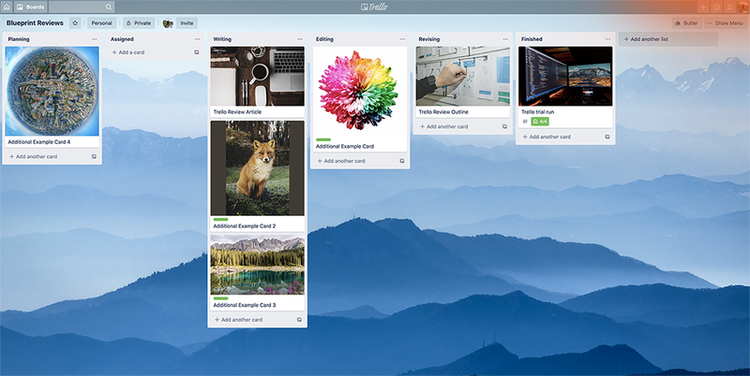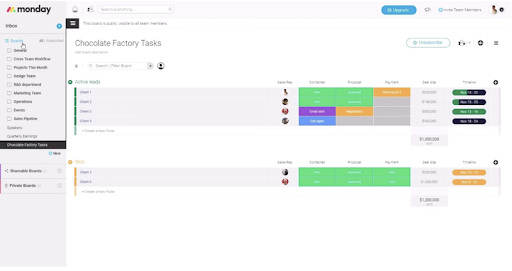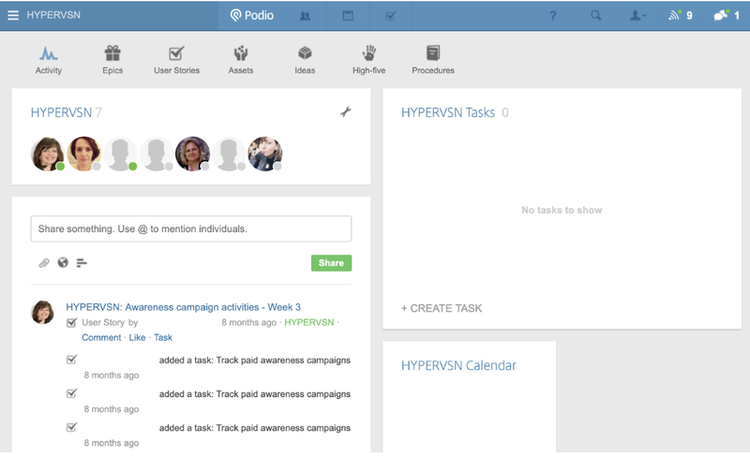Today’s project manager enjoys a plethora of project management frameworks to employ. This choice serves as both a blessing and a curse. You’re not limited, yet choosing the right approach for your project is challenging.
Every framework contains inherent benefits and limitations. Deciding on the right approach requires an understanding of each framework’s strengths and how they align with the nature of your project. Let’s review some popular frameworks to help you evaluate the right one for your needs.
Overview: What is a project management framework?
Project management terms, such as a "framework," can be confusing without the proper context. It’s helpful to take a step back and clarify what exactly is meant when we talk about a project management framework.
The framework outlines the overall processes, tools, and other key components, such as documentation, required to take a project from start to finish. Some frameworks call for a lot of planning and documentation while others require very little.
The framework consists of three pieces: the project life cycle, project control cycle, and tools.
- The project life cycle comprises the phases of a project from planning to execution to closure.
- The control cycle involves the monitoring of a project, such as measuring progress against the project plan, to ensure a project meets its objectives.
- The tools encompass the means for carrying out a project, such as through the use of a Gantt chart.
The components of these three pieces change based on the framework.
The five project management frameworks
Many project management methods exist; too many to touch on them all. We’ve narrowed the following list to the more popular types of project management frameworks used today.
1. Waterfall
The waterfall approach is a typical project framework that involves the following components:
- It uses upfront planning and a methodical, step-by-step approach to execution.
- As its name implies, the steps in a project plan must be executed in a precise order, just like water flowing down a series of cascading waterfalls. The first step must be completed before the second can commence, and so forth.
- Because of this step-by-step execution process, the planning piece of the project life cycle must be thoroughly vetted and documented so that the team can execute the project in the required order.
- A project manager is usually a key player in waterfall, guiding the team toward project completion.
This project management methodology is ideal for projects where the roadmap to reaching the project objectives is clear, usually because it’s been done before, and therefore the number of unknown variables are few.
Construction projects are a good fit for the waterfall methodology. A building’s architecture must be thoroughly planned out before execution of the actual construction can begin. Even then, components such as the building’s foundation must be completed before plumbing or electrical wiring can take place.
Waterfall works poorly in constantly changing environments, which spark a high degree of unknowns, such as in software development.
No amount of upfront planning can properly address the number of variables that affect software projects, which is why other project management methodologies, such as scrum, arose.
2. Scrum
The scrum framework incorporates the ideas of agile project management, and involves the following:
- Scrum breaks a project down into small chunks and delivers incremental value to customers over defined time periods, called sprints.
- It uses an iterative approach that refines project deliverables across multiple sprints until designated performance benchmarks based on customer needs are met. A piece of work is delivered quickly, performance data collected, and that work is further refined based on data analysis. This allows a high degree of flexibility and the ability to adapt to necessary changes as a project evolves over time.
- The framework employs a set of meetings called scrum events, or scrum ceremonies, that represent the steps required to successfully complete the objectives of each sprint.
- A scrum master facilitates the process to ensure the team delivers on their goals.
- A scrum team self-organizes, working together to plan and complete sprints. As a result, no project manager is needed.
Scrum arose because traditional project management frameworks, such as waterfall, don’t address the dynamic, evolving environment of software development. With scrum, a small piece of software can be developed, tested, and rolled out to collect real world data on how that software performed.
Scrum is tailor-made for the software industry but has slowly gained favor in other industries such as marketing. It’s effective in any environment where a piece of work can be deployed to customers in order to collect data for use in improving that work iteratively over time.
3. Kanban
Kanban was born from lean manufacturing processes where the goal is to eliminate waste and optimize the value derived from executing a project. Kanban is a form of lean project management that takes the principles of lean manufacturing and applies them to any type of project using the following approach:
- A project is broken down into individual tasks where each team member self-assigns a task and works on it until it's completed. They then grab another available task and continue in this manner until all tasks are completed and the project concludes.
- A workflow is established with the team, and each task is tracked along the workflow so that the team knows the status of each task at any point in time. A typical kanban workflow involves a handful of simple stages like unassigned, in progress, and completed tasks.
- A kanban board captures these workflow stages. Tasks appear in the form of cards placed in the appropriate stage of the workflow. Team members move the cards along the workflow as tasks progress toward completion.
- Once kanban is implemented, a key tenet is to continue looking for ways to increase value and reduce waste. Examples include cutting back on meetings to improve productivity, or adjusting the workflow to eliminate cumbersome steps.
Kanban works well in any scenario where tasks are constantly fed to a team empowered to pull their own weight and motivated to seek continuous improvement. All kinds of industries benefit from using kanban, including manufacturing, marketing, and software development.
4. PRINCE2
The PRINCE2 framework, an acronym for PRojects IN Controlled Environments, applies a structured methodology involving the following project management steps:
- Structured, upfront planning kicks off a PRINCE2 project, including development of a thorough project management plan. You define measurable project goals as a means of quantifiably determining if the project achieved success criteria.
- Predefined processes comprise all the activities of a project from start to finish, ensuring tight control over the project. For example, every project begins with a business case to justify the investment and define the scope. Once a project commences, any change necessitates additional business justification.
- Team members receive predefined roles and responsibilities. A project manager oversees the work and ensures the project adheres to the PRINCE2 processes.
- The project manager reports to a project board of stakeholders with ultimate decision-making authority over the project.
Developed by the U.K. government as an approach to IT projects, PRINCE2 is an excellent framework for project planning given its detailed and thorough approach.
It’s an ideal project management framework template for large, complex projects that must meet specific, measurable outcomes. For smaller projects, its detailed methodologies may prove overkill.
5. Agile
Agile project management is a popular concept but few realize it’s more a philosophy than a set of concrete processes for project execution. The agile concept was born as an approach to software development and the agile manifesto captures its principles.
Agile focuses on flexibility and adapting to fast-moving, changing environments. It achieves this through the following project management elements:
- Agile uses an iterative approach to project planning and execution. Rather than designing a comprehensive project plan that is carefully followed, an agile team focuses on quickly delivering frequent, incremental results.
- The team then evaluates those results using benchmark data and customer feedback to assess if further changes are warranted before moving on to the next set of project tasks. In this way, the team adapts their work output to the changing needs of a project.
- Team collaboration and delivering value to customers lie at the heart of agile. The team works together to determine the tasks that bring results to customers in the shortest time frame, called an iteration.
- Iterations typically employ the agile ceremonies to bring structure to the fast pace of product delivery, and ensure the team meets their goals.
- Agile methodologies seek to keep documentation and processes to a minimum. This facilitates the ability for agile teams to move fast.
Various project management frameworks espouse the principles of agile. Examples include scrum, kanban, and extreme project management.
Given its nature, agile project management is ideal for fast-moving, constantly evolving projects where the project team must quickly adapt to changes.
How to choose the best project management framework for you
The agile approach to project management has risen in popularity in recent years, sparking an agile vs. waterfall debate. The reality of selecting a project management framework is more complicated than simply comparing these two.
The selection depends on a number of factors; the nature of the project, the team dynamics, and what’s already in place in your organization all affect the decision on a framework.
If lots of upfront planning is required, then waterfall may make sense. If you’re working in a decentralized team structure, kanban may be the most effective approach. If you want to implement scrum but your organization cannot support the addition of a scrum master role, then a different approach may be warranted.
Weigh these factors to choose the appropriate project management framework to meet your needs.
The best project management software for following your project framework
A project management framework isn’t complete without the tools to get the job done. These project management software options allow you to do that.
1. Trello
Need a tool for kanban projects? Trello is the ideal choice. It was built for kanban with a simple, easy-to-use interface that serves as the kanban board for your workflow steps and task cards.

The Trello board is customizable to deliver a visually appealing look to your project. Image source: Author
Trello is one of the simplest and most intuitive project management platforms available. It’s adaptable to execute other agile frameworks such as scrum, and its capabilities are extendable through third-party integrations, so it can meet the needs of other project management methodologies.
2. monday.com
A flexible tool for any type of project management framework, monday.com adapts to your requirements. Want to use a Gantt chart for your waterfall project? Need a scrum or kanban board? If so, monday.com can meet those needs.
Or you can just go with its proprietary dashboard, where key project information is color coded so you find out the project status at a glance.

Monday.com’s board system captures status updates through its color coding.
The platform includes the ability to automate routine tasks, such as sending email notifications, and it encompasses all the basics required for any project, such as budgeting features. For a comprehensive project management tool, monday.com is a top-rated choice.
3. Podio
Podio delivers a slew of project management tools in an affordable package to support your preferred project management framework. Some of its capabilities include automated workflows, integrated chat features for team collaboration, and data visualization to understand where your project is at.

Navigate to your desired options from Podio’s dashboard. Image source: Author
If a built-in feature isn’t enough, Podio provides customization capabilities so you can tailor the tool to match your needs. These customizations allow you to design reports to show the data insights you require. It even offers a free tier for small teams.
Final advice about project management frameworks
Project management is about finding solutions to achieve your objectives, so why limit yourself to just one of these frameworks?
A popular approach these days is to marry scrum and kanban into one framework referred to as scrumban. Elements of scrum and kanban merge to create a framework that applies the best of both worlds.
You can do the same for your project. Take pieces from various frameworks that make sense for your project and organization, and create your own hybrid approach. After all, the framework is there to support you and your team fulfill the needs of your project and achieve your goals.
Our Small Business Expert
We're firm believers in the Golden Rule, which is why editorial opinions are ours alone and have not been previously reviewed, approved, or endorsed by included advertisers. The Ascent does not cover all offers on the market. Editorial content from The Ascent is separate from The Motley Fool editorial content and is created by a different analyst team.